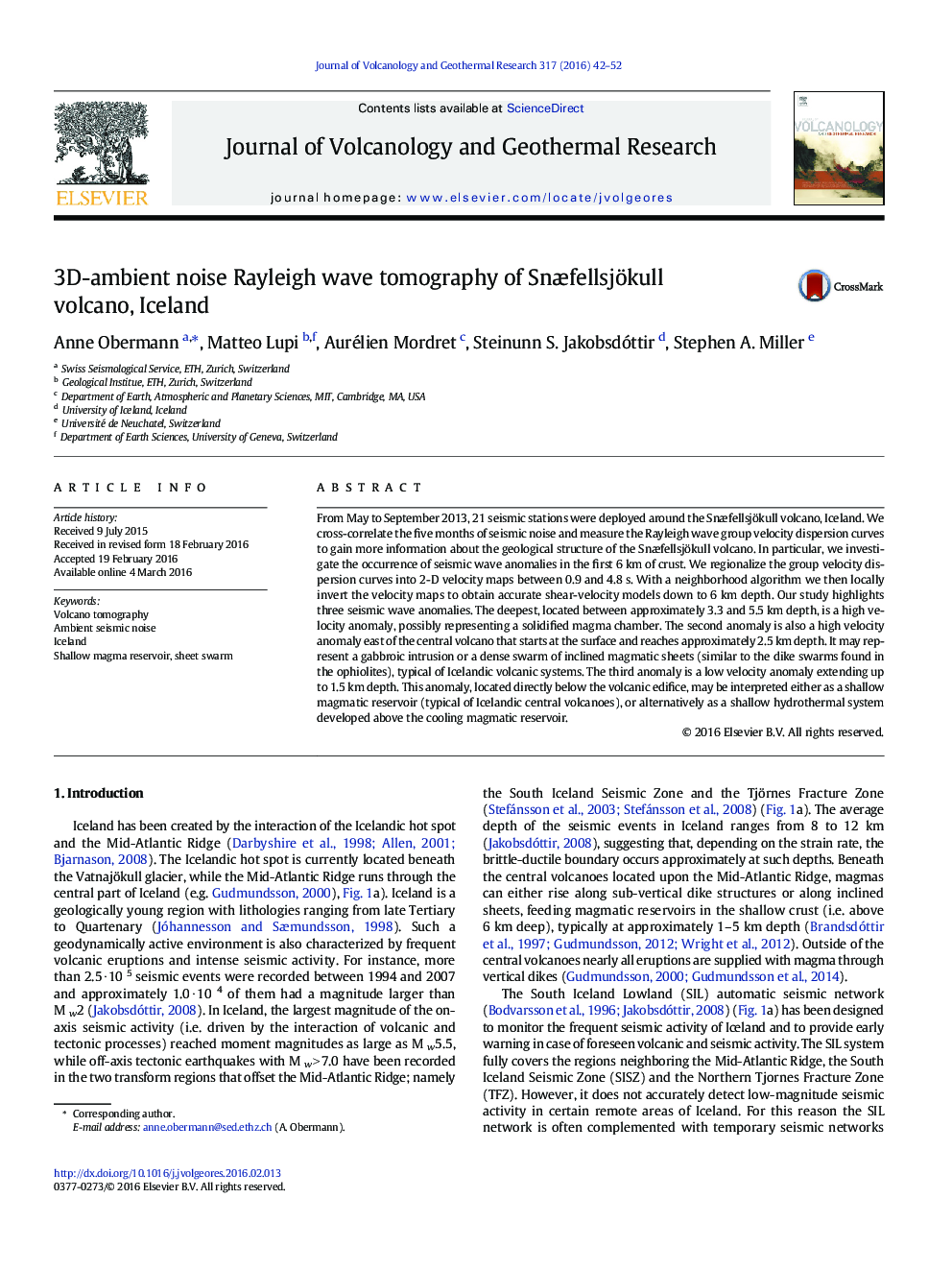| Article ID | Journal | Published Year | Pages | File Type |
|---|---|---|---|---|
| 4714099 | Journal of Volcanology and Geothermal Research | 2016 | 11 Pages |
From May to September 2013, 21 seismic stations were deployed around the Snæfellsjökull volcano, Iceland. We cross-correlate the five months of seismic noise and measure the Rayleigh wave group velocity dispersion curves to gain more information about the geological structure of the Snæfellsjökull volcano. In particular, we investigate the occurrence of seismic wave anomalies in the first 6 km of crust. We regionalize the group velocity dispersion curves into 2-D velocity maps between 0.9 and 4.8 s. With a neighborhood algorithm we then locally invert the velocity maps to obtain accurate shear-velocity models down to 6 km depth. Our study highlights three seismic wave anomalies. The deepest, located between approximately 3.3 and 5.5 km depth, is a high velocity anomaly, possibly representing a solidified magma chamber. The second anomaly is also a high velocity anomaly east of the central volcano that starts at the surface and reaches approximately 2.5 km depth. It may represent a gabbroic intrusion or a dense swarm of inclined magmatic sheets (similar to the dike swarms found in the ophiolites), typical of Icelandic volcanic systems. The third anomaly is a low velocity anomaly extending up to 1.5 km depth. This anomaly, located directly below the volcanic edifice, may be interpreted either as a shallow magmatic reservoir (typical of Icelandic central volcanoes), or alternatively as a shallow hydrothermal system developed above the cooling magmatic reservoir.
